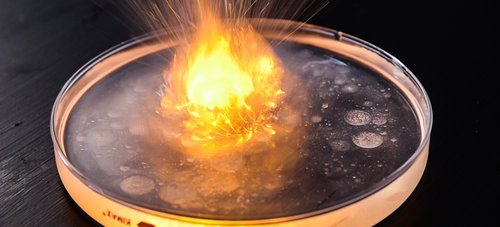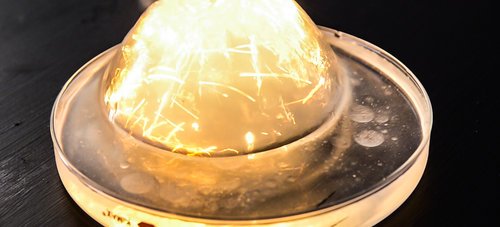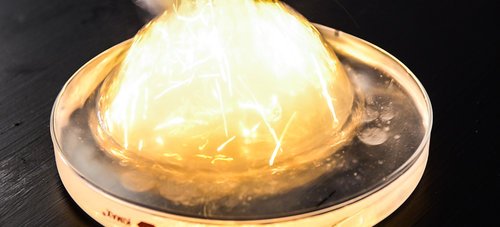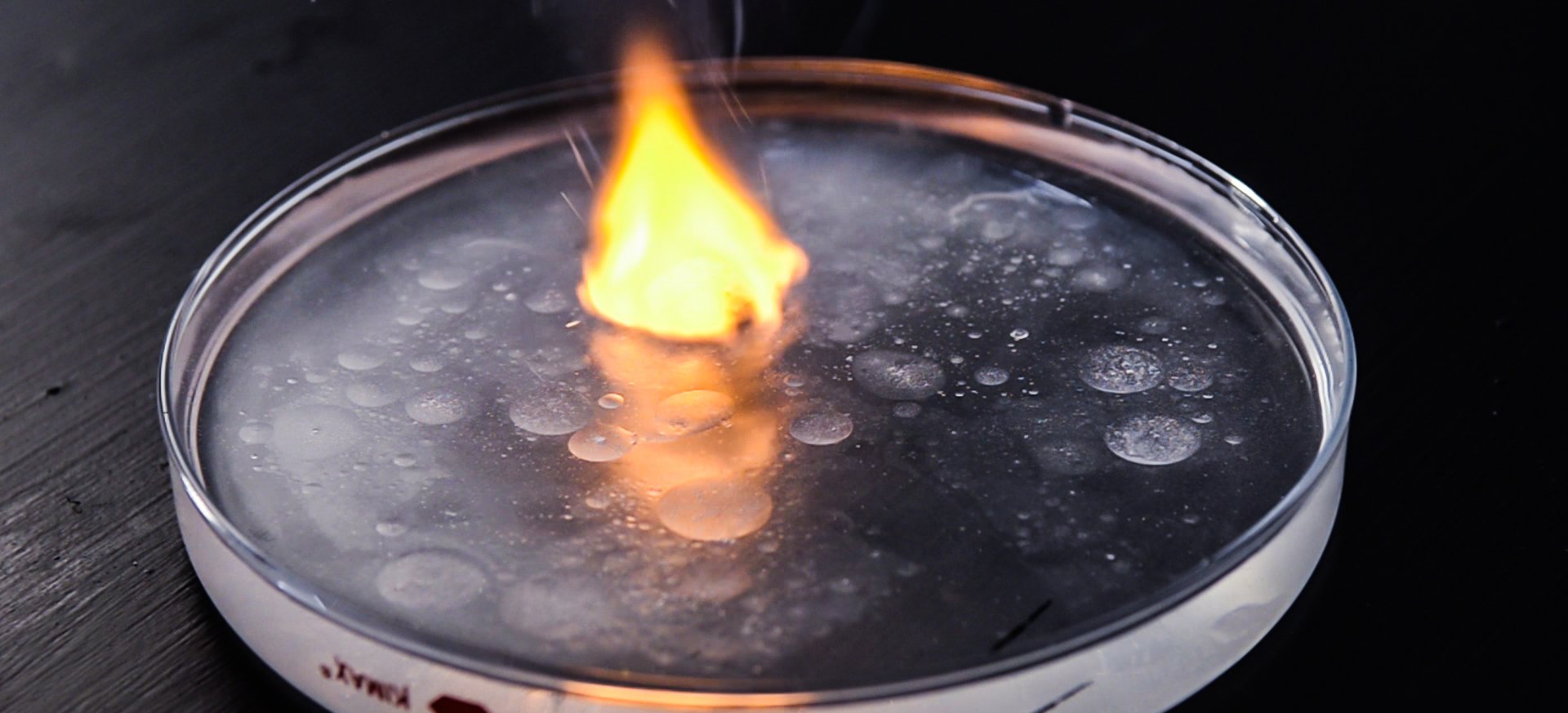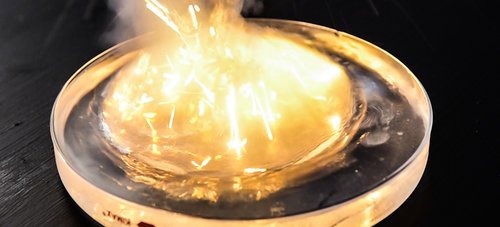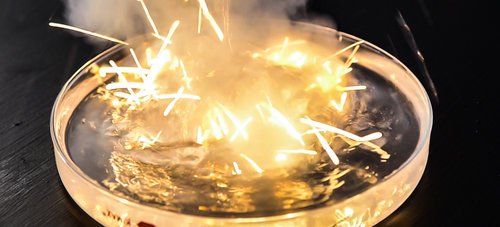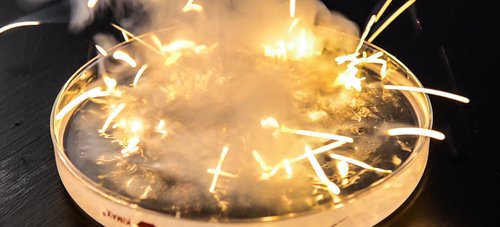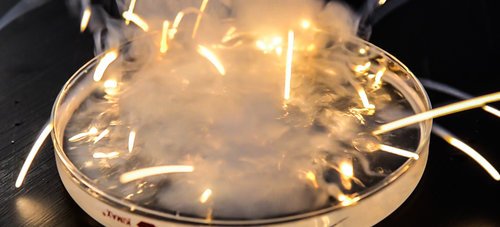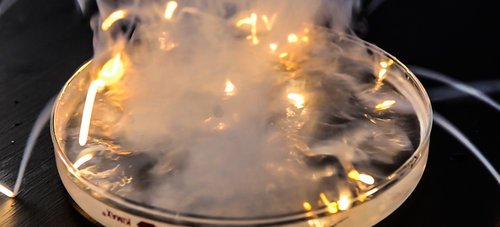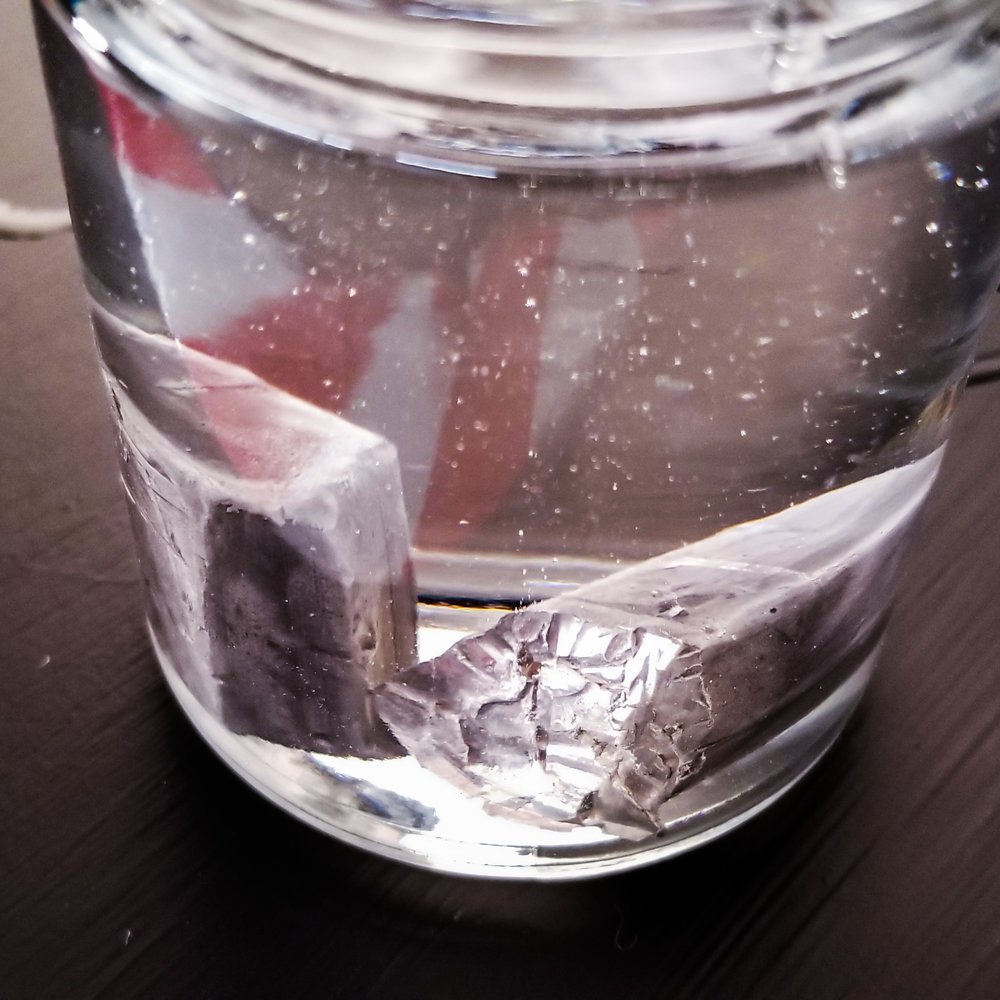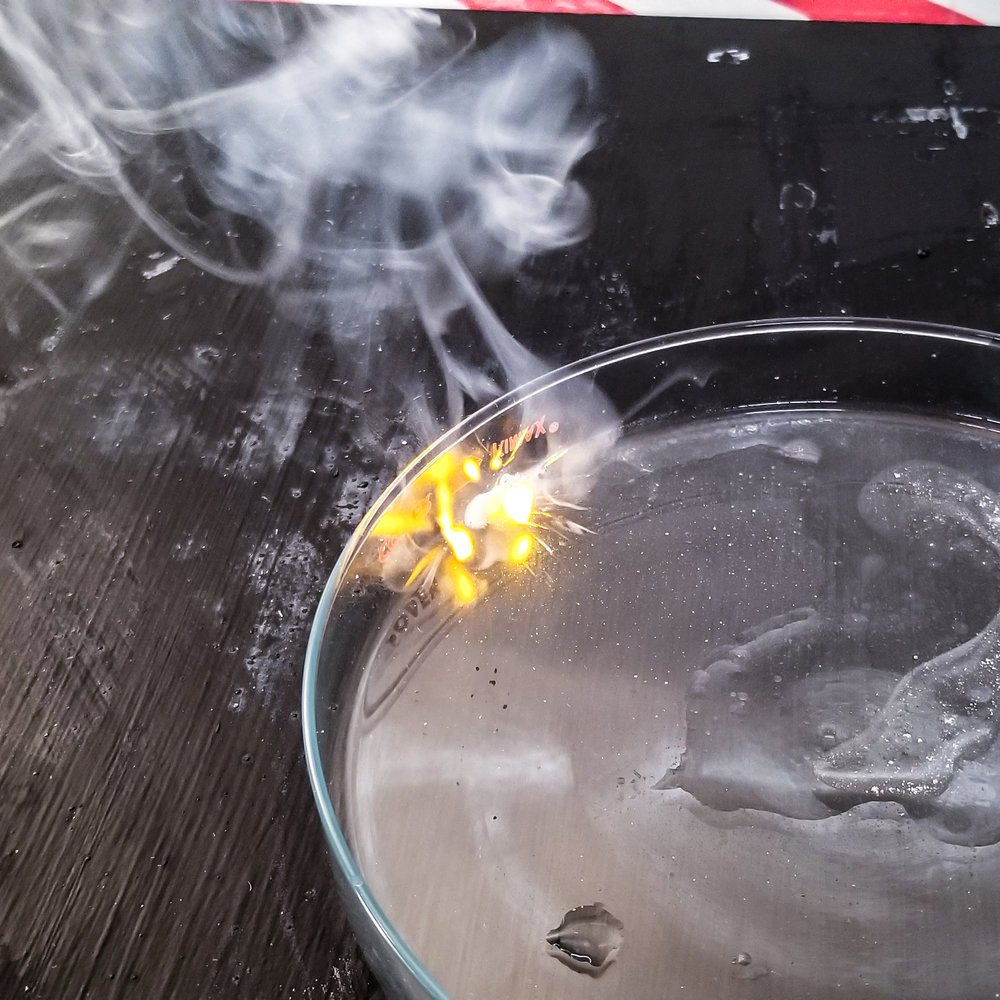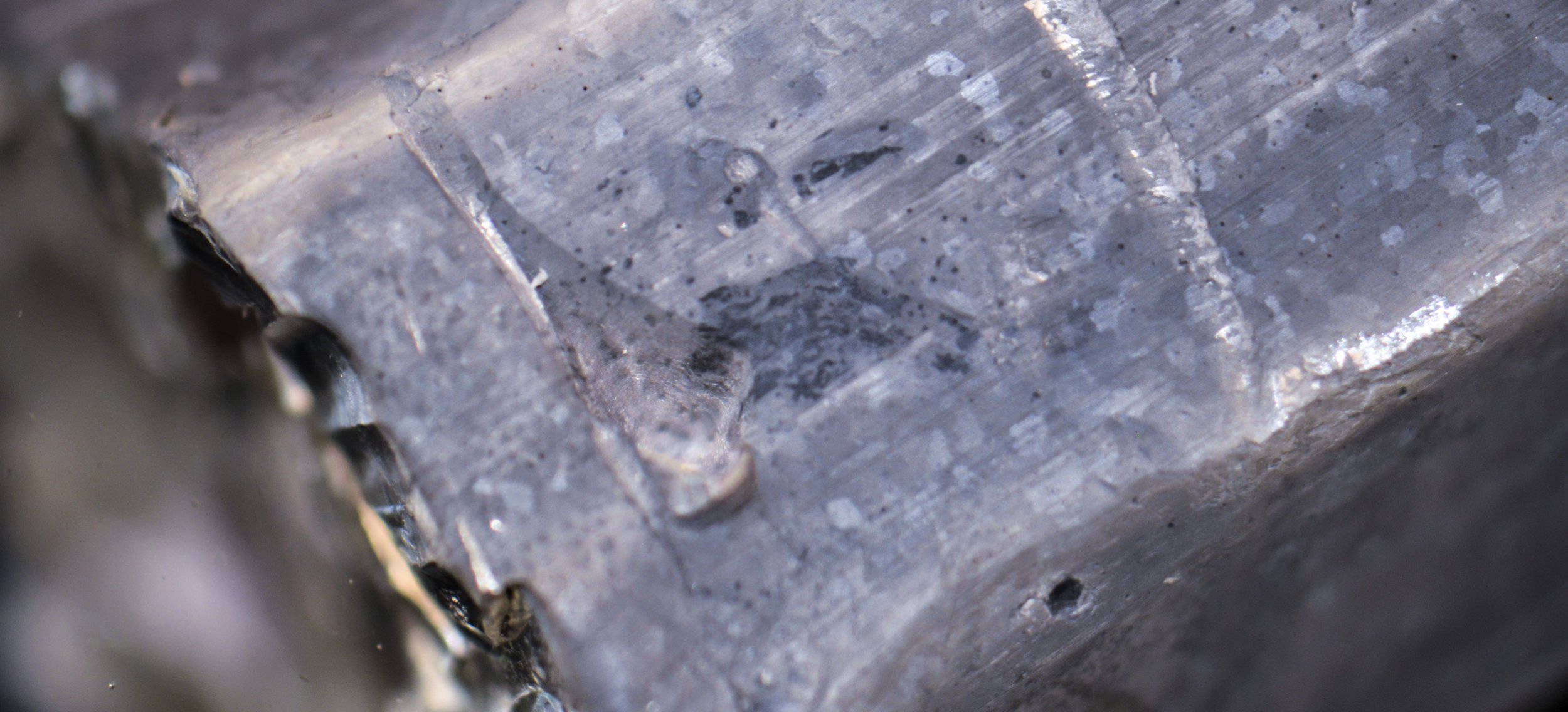Sodium [Na] Metal & Coulomb Explosions
One Frame At a Time
Up above is a wonderful 10 frame selection of the Coulomb explosion seen with sodium metal and water. To understand what a Coulomb explosion is, we must first define what an explosion is, which is a rapid transfer of energy from one form to another, usually heat, light, and sound. Then we must define the word Coulomb, which is a unit of electric charge. So this violent reaction is not a result of rapid combustion or the formation of hydrogen gas, but rather another mechanism not well understood until recently. As a matter of fact, the chemical reaction itself should actually form a buffer layer around the sodium metal surface and prevent any further reaction from happening, let alone an explosion of such a violent nature.
Researchers ran molecular dynamic simulations to better demonstrate that when a liquid alloy form of sodium and potassium metal where fully immersed in water, electrons where immediately pulled from the metal surface. As a result, the reaction quickly reaches the Rayleigh instability limit, which leads to a Coulomb explosion rather than a chemical quenching of the reaction. A Coulomb explosion is a process in which outer valence electrons are easily stripped from atoms, leaving the atoms positively charged. As more electrons are stripped away, especially in a material with metallic bonds where electrons are delocalized, the repulsive state between atoms yields an explosive force of energetic ions, which is far more energetic than thermal emissions.
There is a sense of excitement when you first receive a sodium metal ingot. To keep the metal from reacting with the local atmosphere, I prepare a glass dish with a mineral oil bath. Sodium metal in normal atmosphere will turn white, a fresh sample will have a metallic luster like many other metals.
Sodium metal is "soft" with respect to what most people understand about metals in their everyday lives. It has a consistency that of a bar of taffy, somewhat resistant, but nowhere near impossible to cut with a spatula. Of course, unlike candy, never should you eat the sodium metal. The body prefers the good old fashioned salt form known as sodium chloride [NaCl]. besides, this would obviously be a very bad idea and dangerous, if not deadly, considering that it has extremely exothermic and explosive reactions with water and forms the highly basic compound known as sodium hydroxide [NaOH].
As you can see in the following images, the grain boundaries and crystalites can be seen. There is a normal metallic luster that will quickly tarnish with any exposure to the air.
